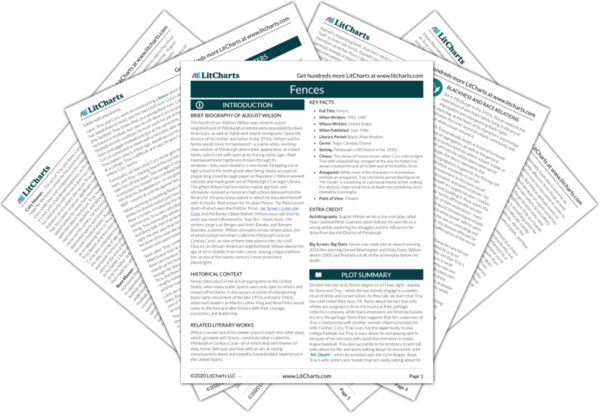The fourth of six children, Wilson was raised in a poor neighborhood of Pittsburgh predominately populated by black Americans, as well as Italian and Jewish immigrants. Upon the divorce of his mother and father in the 1950s, Wilson and his family would move to Hazelwood—a mainly white, working-class section of Pittsburgh where their appearance, as a black family, wasn’t met with open arms. Facing racist rage—their Hazelwood home had bricks thrown through its windows—they soon moved to a new home. Dropping out of high school in the tenth grade after being falsely accused of plagiarizing a twenty-page paper on Napoleon I, Wilson worked odd jobs and made great use of Pittsburgh’s Carnegie Library. The gifted Wilson had learned to read at age four, and ultimately received an honorary high school diploma from the library for the precocious extent to which he educated himself with its books. Best known for his plays
Fences,
The Piano Lesson (both of which won the Pulitzer Prize),
Joe Turner’s Come and Gone, and
Ma Rainey’s Black Bottom, Wilson once said that his work was most influenced by “four B’s”—blues music, the writers Jorge Luis Borges and Amiri Baraka, and Romare Bearden, a painter. Wilson ultimately wrote sixteen plays, ten of which comprised what’s called his
Pittsburgh Cycle (or
Century Cycle), as nine of them take place in the city’s Hill District, an African-American neighborhood. Wilson died at the age of 60 in Seattle, from liver cancer, leaving a legacy behind him as one of the 20th century’s most prominent playwrights.
